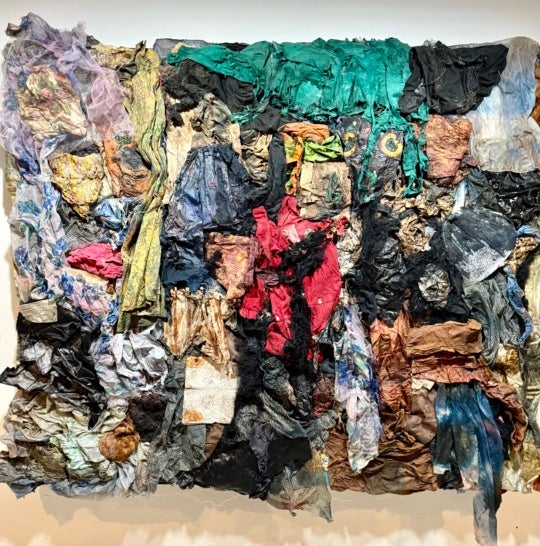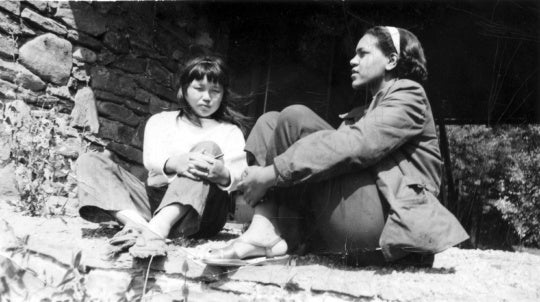
What is the role of memory in our lives? How do myth and ritual influence memory? How do our memories of the past define and shape how we envision ourselves in the present and the future? When we lose our memories, do we lose ourselves?
These questions seem to be at the forefront of “Ephemeral Eternity: Memory, Ritual, and Myth in a Time of Dissolution,” on view at Gallery 72 through May 1. The four women artists represented—Robin Bernat, Jessica Scott Felder, Karen Tauches, and Wendy Phillips—take on memory’s role as an archival agent, attempting to frame fleeting moments in a state of permanent stasis. The urge to capture that which is at risk of being lost gives this exhibition a sense of urgency, yet the call to arms is paired with a certain fading of the quiescent image that it so desperately attempts to excavate, form, and hold onto.
A bouquet of yellow roses and orange black-eyed susans are depicted in Bernat’s film Your Chapters Here Are Now Mine, which is projected on a wall. In the scene, shot as a long take, the flowers pulsate to a rhythm of light — emphasized by the delicate shakiness of the camera handling — accompanied by Mozart’s Andante from Piano Concerto No. 21, the score of which was arranged by Atlanta-based musician Jon Ciliberto.
The fear of beauty’s ineluctable evanescence, as well as the desperate attempt to arrest beauty in the prime of its bloom, so to speak, is conveyed — almost fervently — in Your Chapters. And, Ciliberto’s arrangement of Mozart’s Andante takes an original composition that is so ripe with a sense of innocence and and a dreamlike insouciance, transforming it into a more plangent, melancholic orchestration.

In the same room is Felder’s “Harriet Series,” comprising her mixed-media installation Compass Rose and two collage prints, Victorian Ancestry 1 and Victorian Ancestry 3, which depict Victorian-style slipper chairs. For Compass Rose, the artist reupholstered an antique chair in leather to honor Harriet Tubman, a homage intended to invoke an ancestral matriarchal presence. Placed beneath the chair is a compass rose pointing north, while directly above the chair is a chandelier, all contained within a sheer black canopy hanging from the ceiling.
Notions of liminality are central in Tauches’s video study 1 from her “Window World Series,” which is projected on a wall. Arranged in a 3-by-3 grid, nine Polaroids of a view of, and through, a cabin window, are each superimposed with an image taken from the cozy confines of the cabin’s living room and an image of a scenic Appalachian mountain landscape. In the video, the two views interchange, yet even when one image is in greater focus, the contours of the other, like a ghost or an afterimage, still remain.
Even before entering the second gallery, a visitor would be likely to hear Ray Charles belting out “I’ve Got a Woman,” or Brook Benton’s “Rainy Night in Georgia,” or even Chubby Checker exclaiming, “come on, baby, let’s do the twist!” These pop classics are emanating from Wendy Phillips’s Daddy’s Music Box, which is, in fact, a music box. On the wall above the music-making device are two circular collages: one, Earliest Memories, is decorated in a way that alludes to a mandala, infused with a craft aesthetic; the other, Music, depicts a Jimmy Smith record with the lyrics written around the vinyl’s label, which is then encircled by used birthday candles placed atop torn fragments of sheet music and brightly colored tissue paper.
Old pop songs captured within a wooden box; and a record, once fit for spin, now adorned with a remembrance of things past; a window that serves as the threshold between the here and the there within the realm of some historical present; antique objects that underscore the loose threads that were once woven tightly into the fabric of our social narratives; and the simultaneous celebration and mourning of beauty — in “Ephemeral Eternity,” the past, gasping, issues a resurrection plea.




